The Great Barrington Declaration recently turned five years old. To celebrate, the document has been opened to new signatories.
This decision is somewhat surprising, as it effectively turns the GBD into a “living document” rather than allowing it to stand as a historical and political artifact of its time. Considering that its authors — Jay Bhattacharya, Martin Kulldorff, and Sunetra Gupta — have repeatedly affirmed their effort and claim to have been “proven right,” the move raises questions about purpose and timing.
It also suggests that Bhattacharya, Gupta, and Kulldorff continue to stand by what they wrote and aren’t willing to revisit the document or consider where they might have been mistaken, in view of newer, better evidence.
The stewards of the declaration, Brownstone Institute, evidently regard signatories as those who stand with the authors now. In my opinion, that alters the meaning of the list, if not the document.
Did I sign?
I signed the GBD in October 2020 — or so I thought.
After seeing on X that the GBD had been “re-opened,” I contacted Lucio (Lou) Eastman to request removal of my name. My thinking has changed considerably since the statement debuted. I now regard its core premises, assumptions, and recommendations as not only deeply flawed but harmful and protective of a Core Lie about a sudden-spreading novel SARS virus in need of slowing.
Because signatories are apparently treated as ongoing endorsers, I felt it was important to make clear that I no longer am one.
As I composed a short email to Eastman, a plot twist popped into my brain: What if I actually DIDN’T sign, but only THINK that I did?
On 5 October 2025, I wrote:
Dear Mr. Eastman,
I am writing to request that my name be removed from the Great Barrington Declaration.
If I am mistaken about having signed, and my name is NOT in the database of signatories, please let me know.
In any case, I request acknowledgement of this email.
Regards,
Jessica Hockett, PhD
Given that a colleague who made a similar request last year never received a response, I wasn’t sure I’d hear back.
But, to his credit, Eastman replied quickly, an hour later:
I have decreased the number of signers by one. If you signed in the past and it was counted, it has now been reduced by that number. Best I can do.
Does this mean I didn’t sign?
I searched my email for confirmation that I submitted the form, but nothing came up. I can’t find confirmation in my late 2020 tweets either, though I clearly supported it.
I replied,
Thanks. So you do not retain the names?
What happens/happened to the submitted contact information?
Appreciate the response,
Jessica
Eastman didn’t respond.
So for now I’m settling for being “minus 1” and am thinking that
a) I meant to sign but didn’t.
b) I construed at the time that signatories needed to be scientists or medical doctors.
c) I did sign but Eastman did not or could not check the relevant database.
Hours after his email, Eastman reminisced on X that during the first days of the Great Barrington Declaration, “trolls would sign and then instantly declare they changed their minds and wanted their name delete. This was one of the MANY games played in order to sabotage the GBD.”
This strikes me as an odd trolling technique, but there were doubtless many direct efforts to technologically sabotage the GBD, in addition to organized pushback like The John Snow Memorandum and name-calling calculus via email.
(Side note: In this case, negative attention is better than no attention. Factions of scientists contending with one another a good thing, not a bad one, and government officials using emails they know are subject to FOIA to do so is, to me, more performance art than it is anything else, albeit unprofessional and unethical.)
So who signed?
Besides the three authors, 43 scientists from various countries are featured prominently on the Signature page.
Showcasing other respected scientists who signed is sensible and adds gravitas.
But iterations of the site in 2021 feature the signatures of other “verified, approved, and vetted” medical and public health scientists too. Where did those go? Is there a way for those and all signatures to be displayed?
I asked Eastman and Tucker publicly but didn’t get an answer.
On the current GBD site, signers are grouped by “type” — concerned citizens, medical/public health scientists, and medical practitioners — and displayed on a map by country. Most signatures come from the U.S., U.K., and Germany.
Per the consent portion of the signature form, submitted information is stored in a database, protected in some way, and not passed on to third parties. Whether the statement “Personal information will not be displayed publicly” is supposed to apply to the signer’s name isn’t clear. That all but a few names aren’t featured on the site suggests it does.
How many, not who?
Because such decrees operate as petitions, and are used to lobby policymakers and steer public opinion toward sanctioned viewpoints, I see no real justification for publicizing only certain names.
If a donor-supported non-profit is saying nearly a million people signed a Very Important Document that was the genesis of the organization, shouldn’t there be a way for the public and prospective patrons to verify the claim?
And if individual can’t be told whether their name is in a database, doesn’t that raise questions about how the names were gathered, counted, and stored…and about what else they were used for?
I’m am open to hearing an explanation or rationale from Eastman or Tucker.
The Great Barrington Declaration wasn’t the only COVID-era “dissident document” to solicit endorsements, of course, but it remains one of the most elevated That may be due, in part, to how widely it was covered at the time by mainstream outlets such as The Wall Street Journal and The New York Times.The Brownstone Institute has also been tireless in promoting it as something of a precursor to political victory, as two of its authors now hold prominent policy roles (Bhattacharya as NIH Director and Kulldorff as ACIP Chair).
Five years on, the question of who signed isn’t just about a list of names — or whether I signed. It’s about what the signatures were (and still are) meant to prove. If the enduring value is in how many versus who, then the Declaration’s legacy seems to be less about science than it is about marketing.


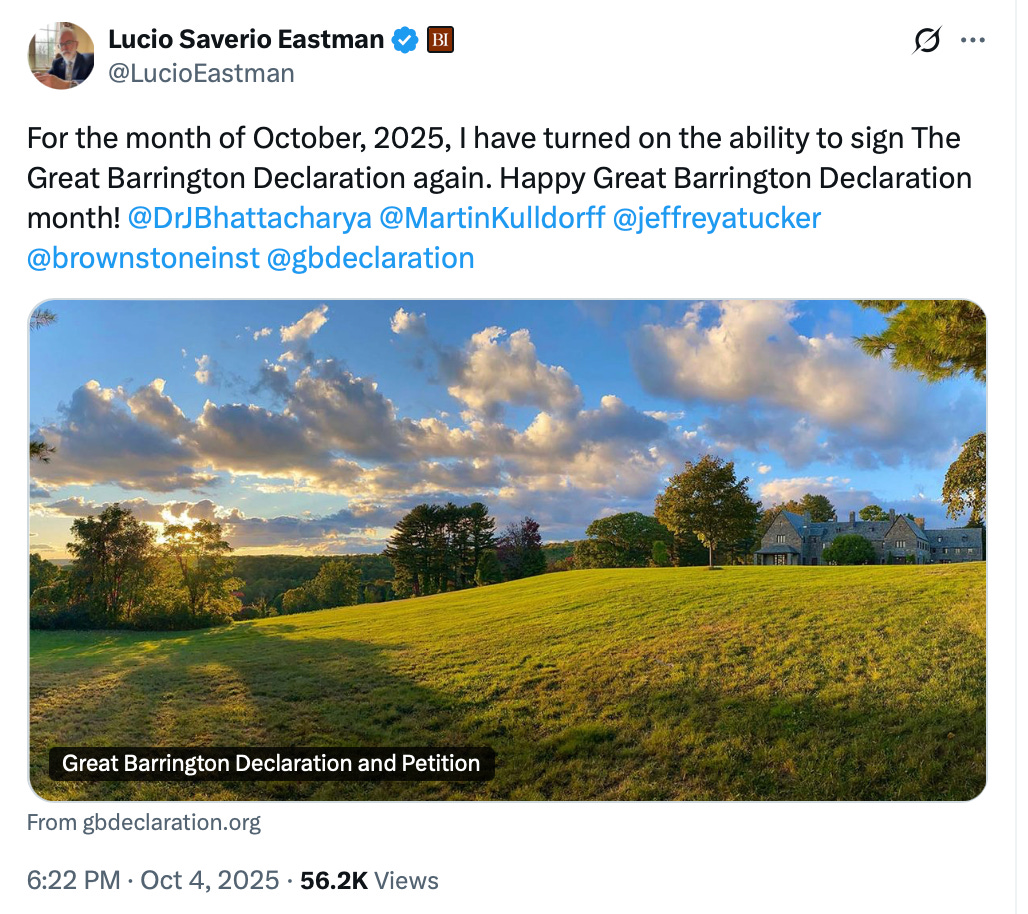
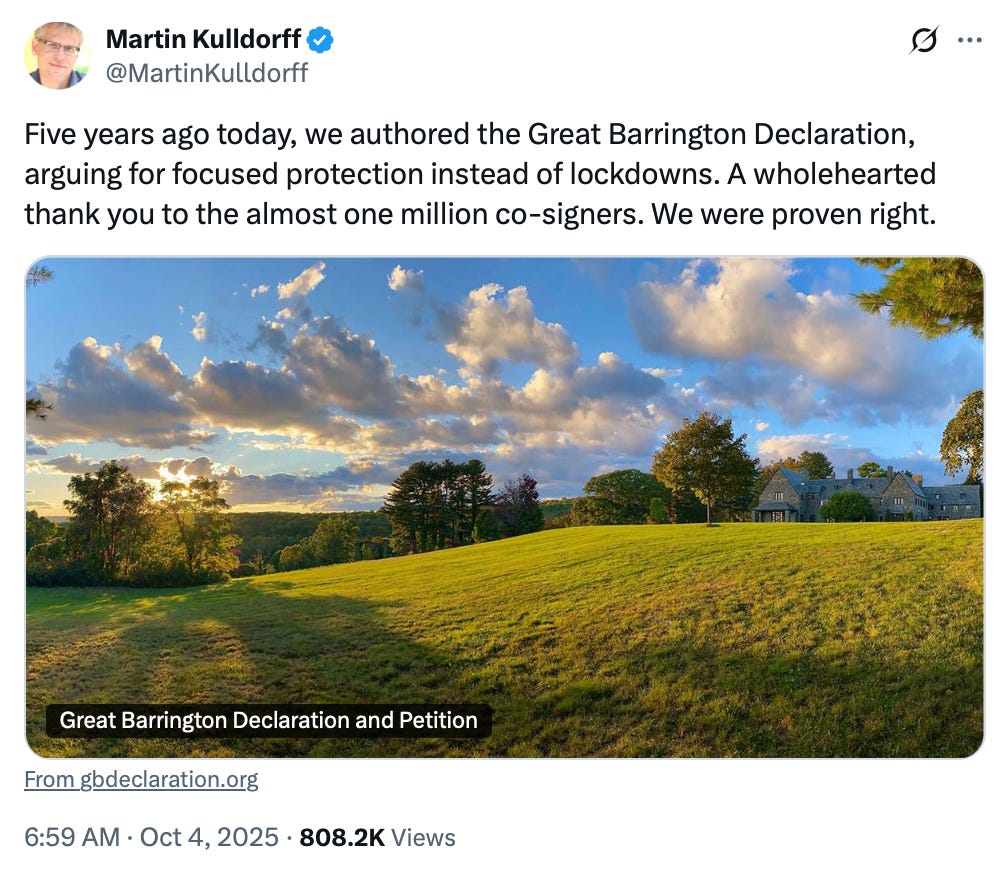

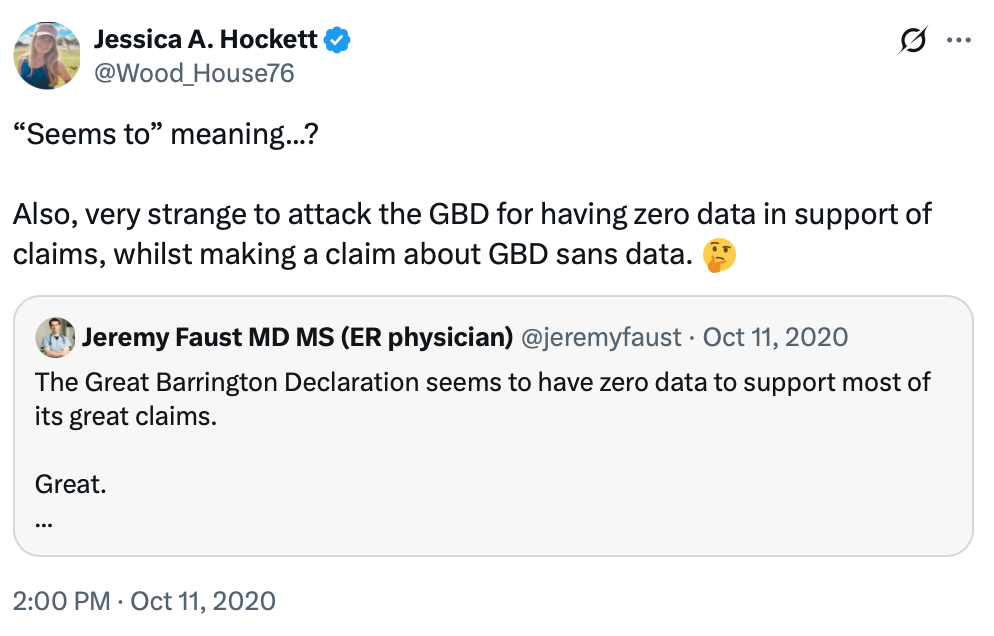

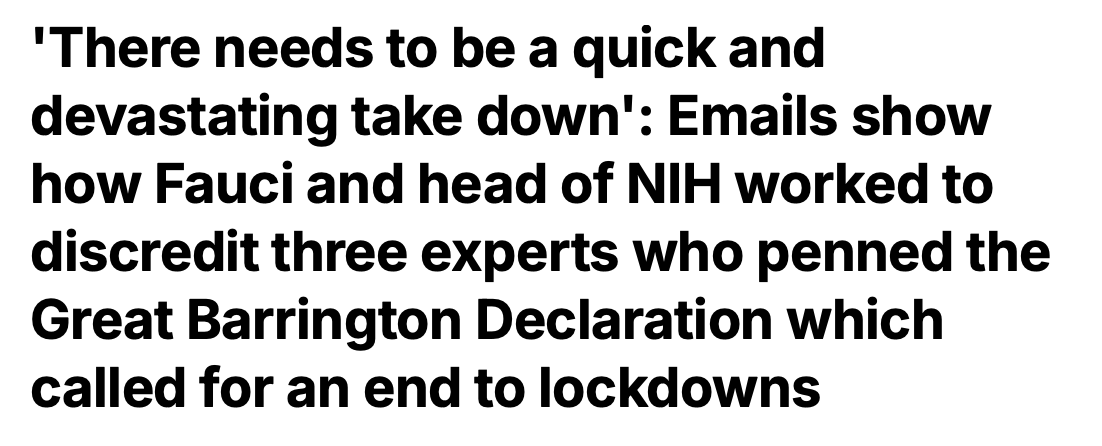
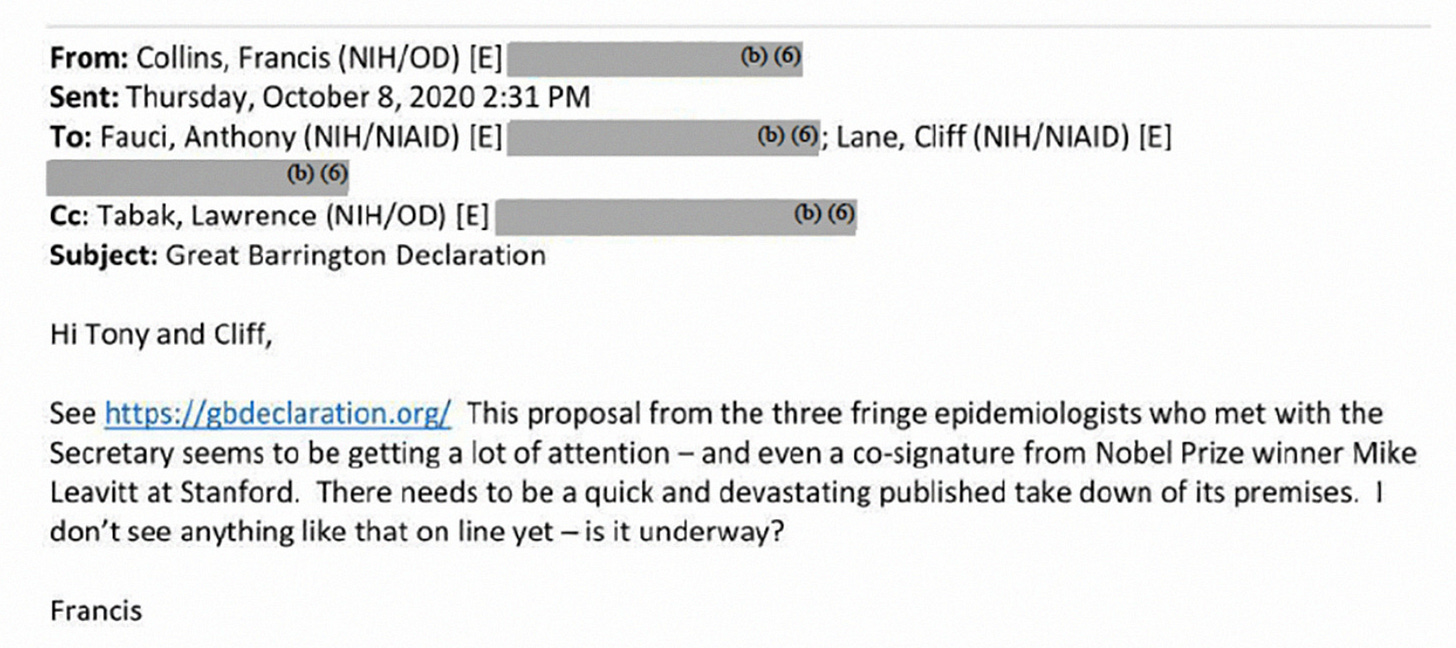
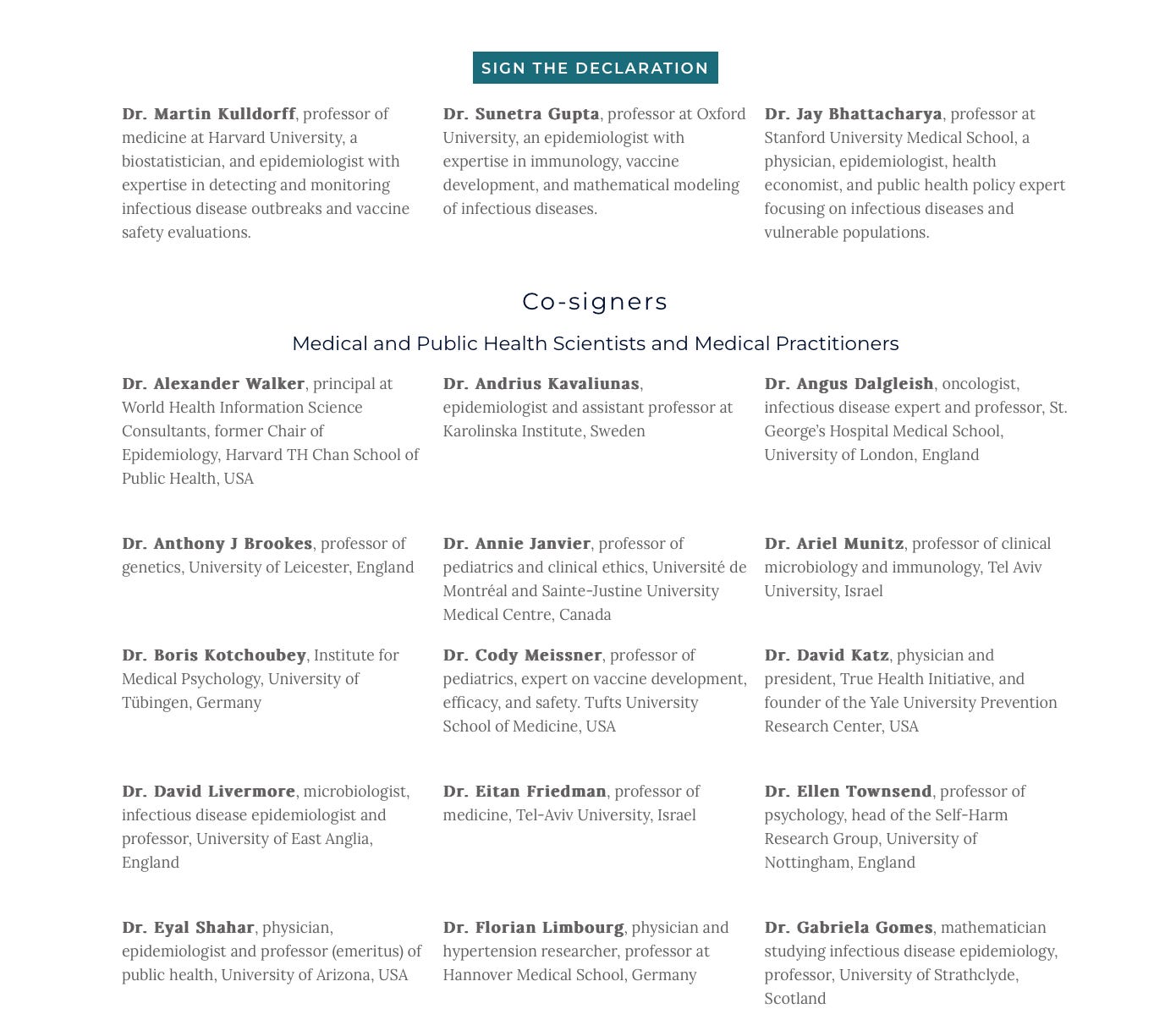
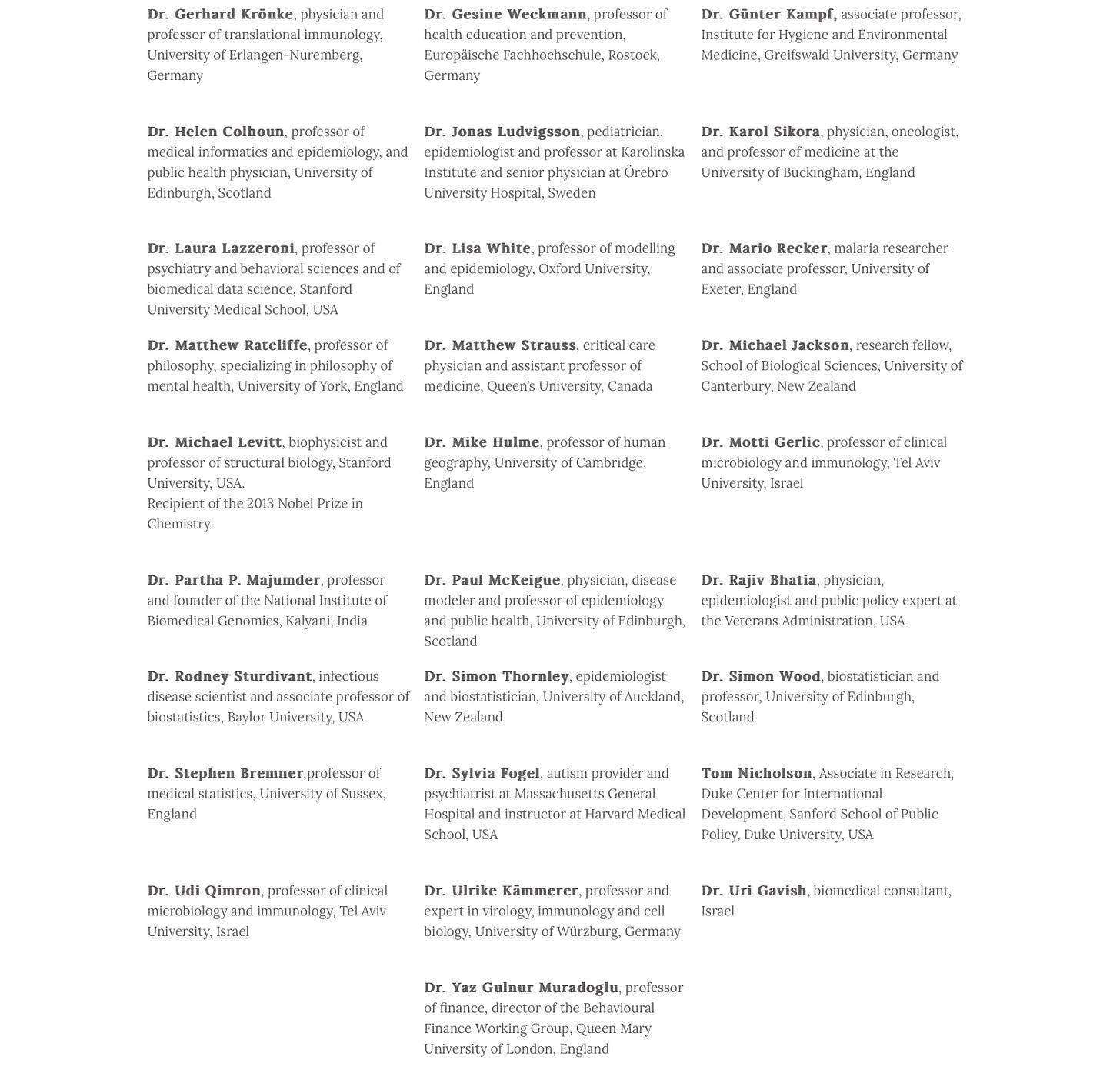
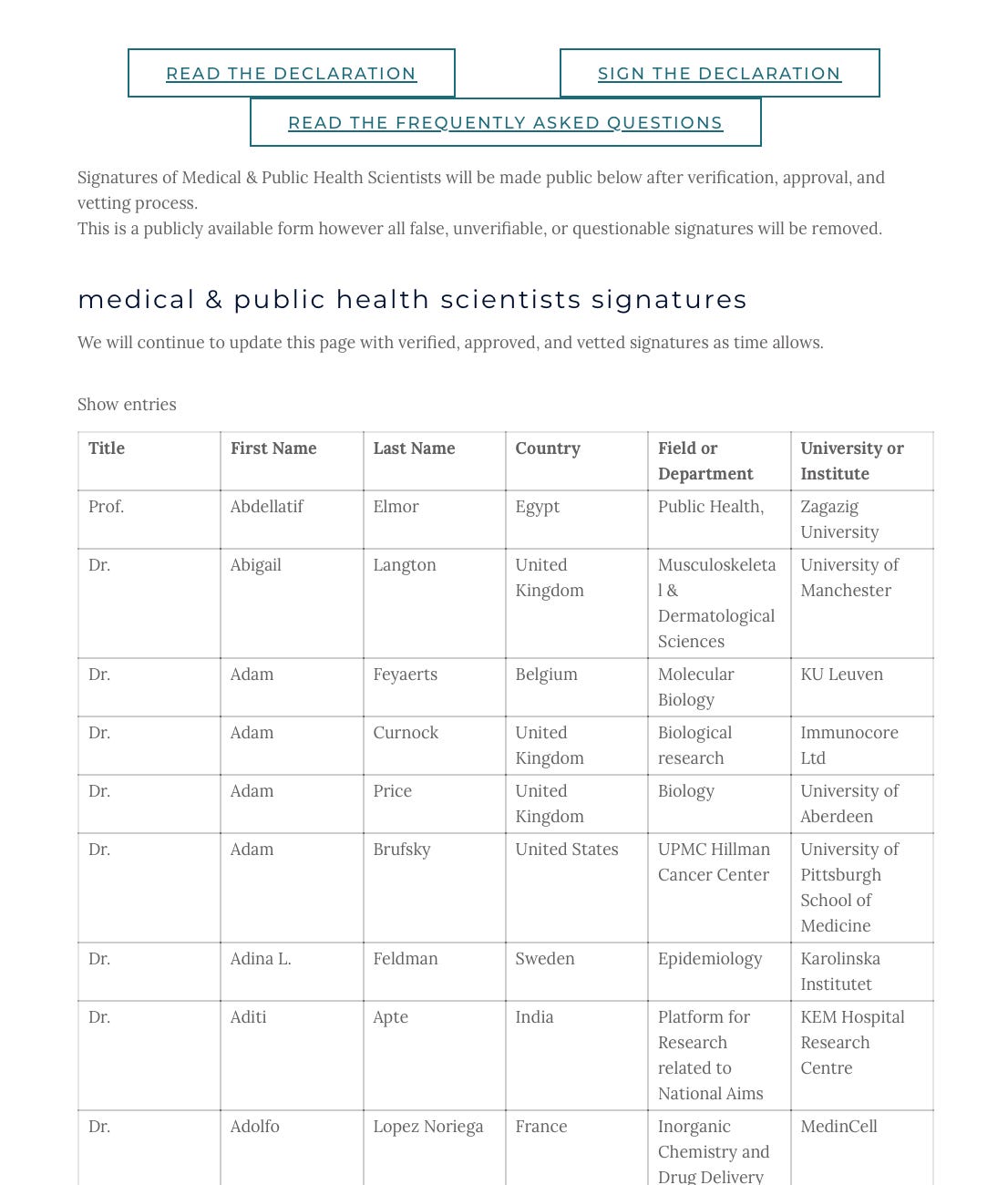
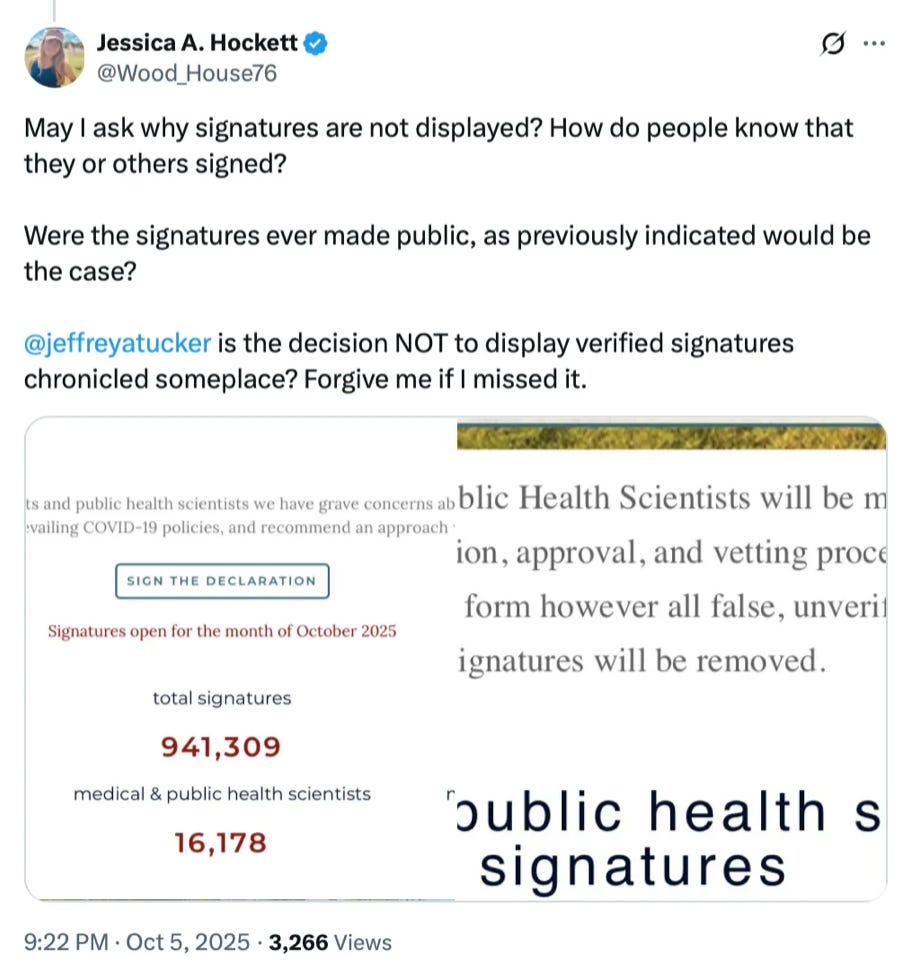
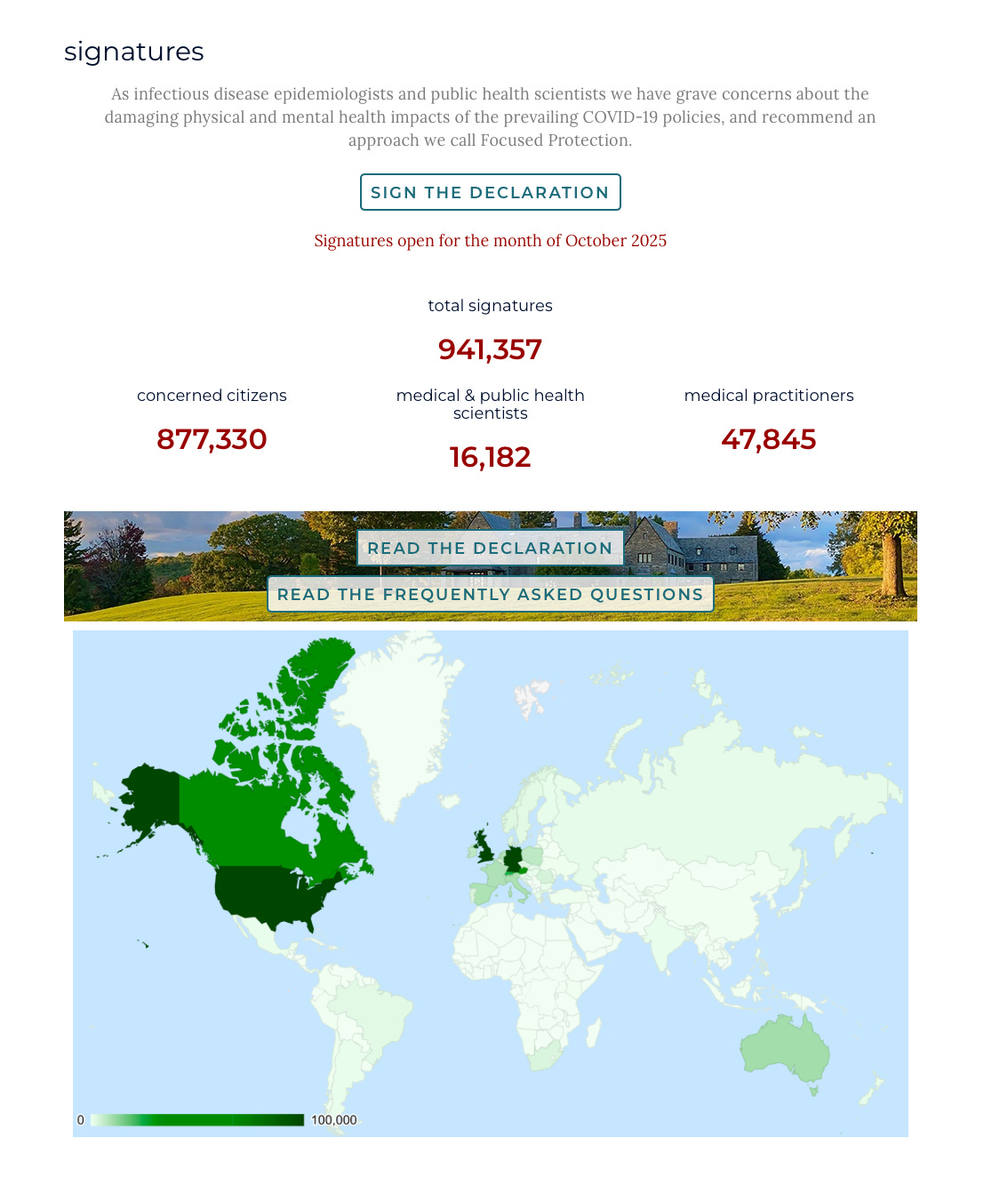
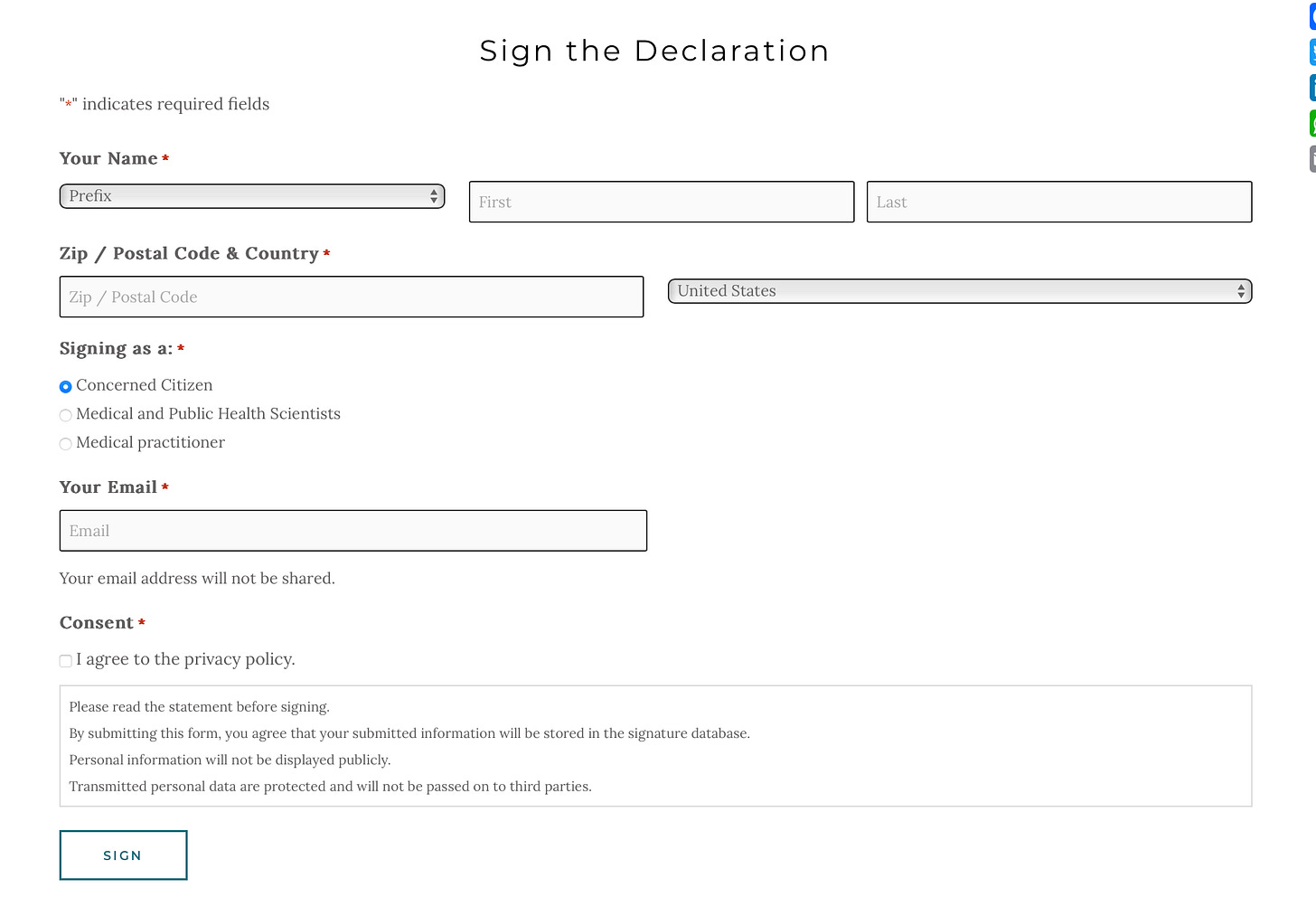
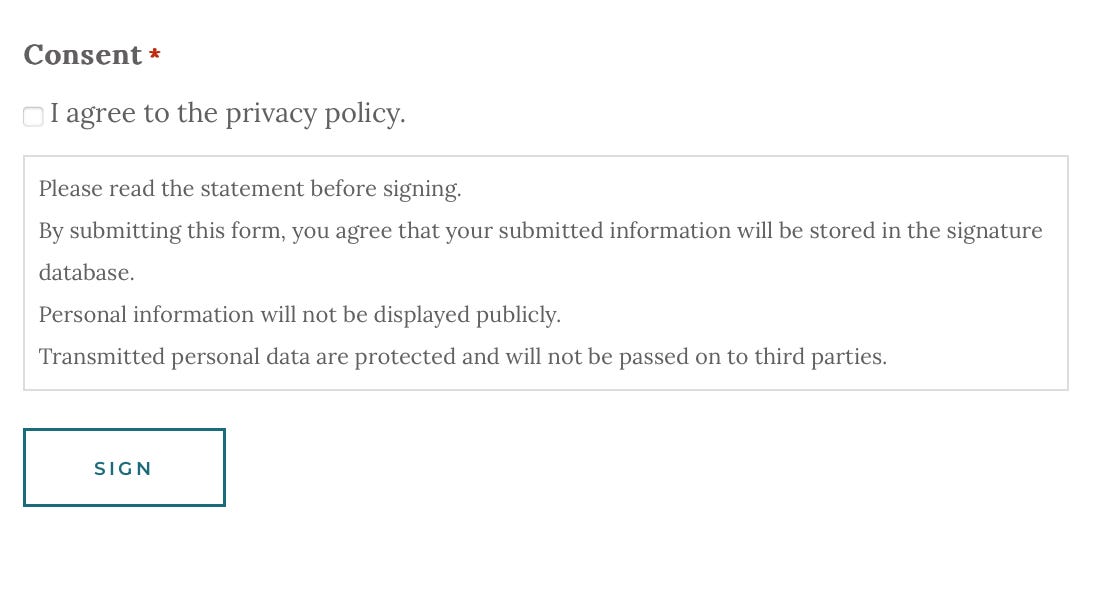
The email from Francis is wild. What I find more impressive is that they let him retire in 2025, how was he not fired?
Mostly, people who are highly qualified but are pretty stupid.